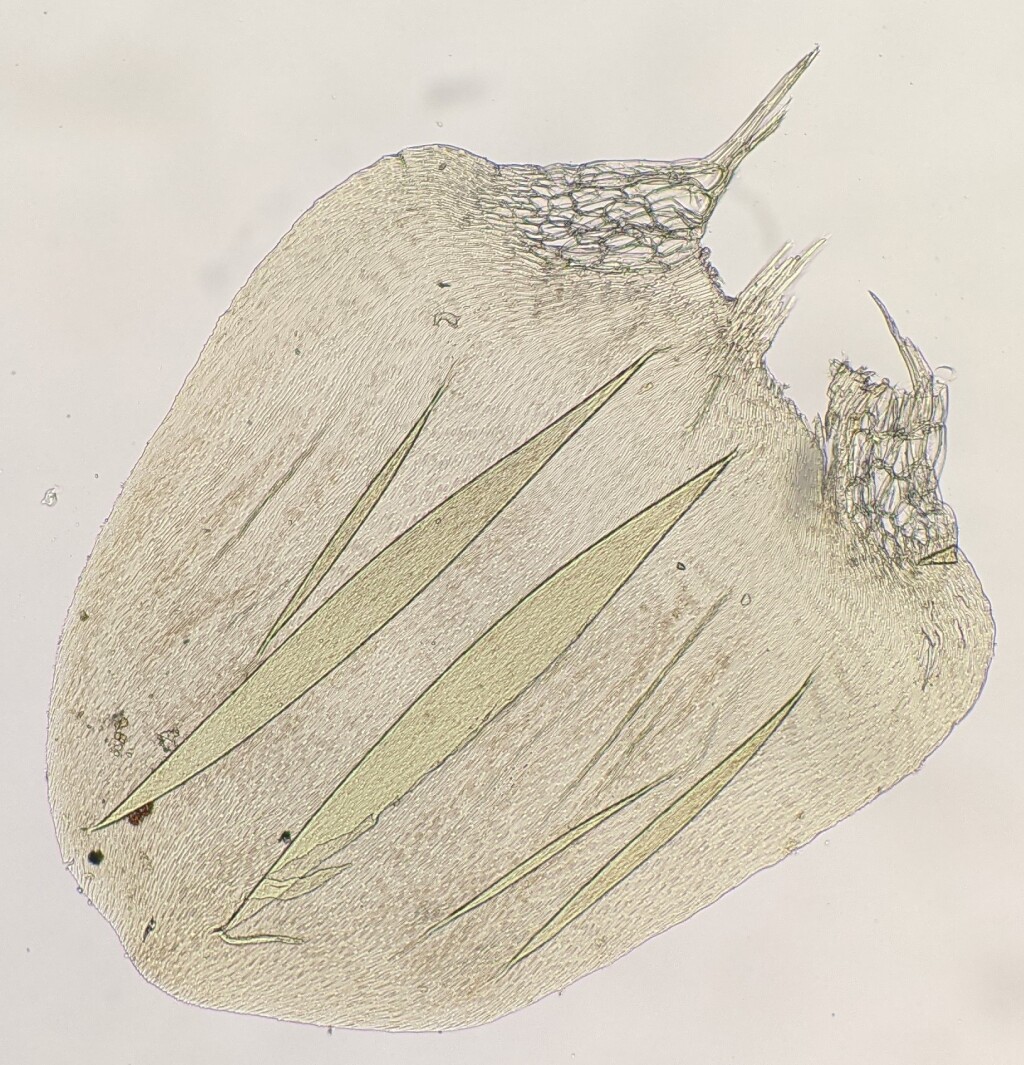Acrocladium chlamydophyllum
(Hook.f. & Wilson) Müll.Hal. & Broth.Rough mats on soil or tree trunks or sticks and logs, pale to yellowish green. Stems and branches with cuspidate tips. Leaves broadly ovate, 1.2–1.7 mm long, 1.1–1.5 mm wide, strongly concave, decurrent; apex obtuse to rounded; costa absent, short and double or single; margins entire, plane; laminal cells linear, 55–100 µm long, 4–7 µm wide, smooth; alar cells rectangular, inflated, 25–83 µm long, 10–43 µm wide, hyaline. Seta 16–27 mm long, red, smooth. Capsules inclined, cylindric, curved, 2–2.5 mm long. Operculum conic, 0.4–0.5 mm long.
GleP, VVP, GipP, OtP, Gold, CVU, GGr, EGL, EGU, WPro, HSF, HNF, OtR, Strz, MonT, HFE, VAlp. Up to around 1000 metres altitude along the Great Dividing Range and mostly high rainfall areas further south, beside streams, permanently wet areas or in wet sclerophyll forest or rainforest. Also NSW, Tas and Macquarie Island. New Zealand and Auckland and Campbell Islands. .
Acrocladium chlamydophyllum has been included in A. auriculatum. The two species are similar but A. chlamydophyllum can be distinguished by the absence of leaf auricles and the more broadly ovate leaf shape (Karczmarz 1966). There is also genetic separation with samples from populations in Australia and New Zealand forming a lineage exclusive of A. auriculatum samples in phylogenies of chloroplast and nuclear DNA sequences (Blöcher 2004; Blöcher et al. 2006).
 Spinning
SpinningBlöcher, R. (2004). Molecular Evolution, Phylogenetics and Biogeography in Southern Hemispheric Bryophytes with Special Focus on Chilean Taxa . Ph.D. thesis, Bonn.
Blöcher, R.; Quandt, D.; Frahm, J.-P. (2006). Molecular circumscription and biogeography of the genus Acrocladium (Bryopsida). Studies in austral temperate rain forest bryophytes 29. * Journal of the Hattori Botanical Laboratory * 100: 15–30.
Karczmarz, K. (1966). Taxonomic studies on the genus Acrocladium Mitt. Nova Hedwigia 11: 499–505.

